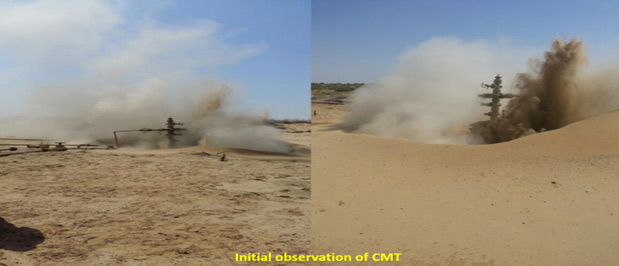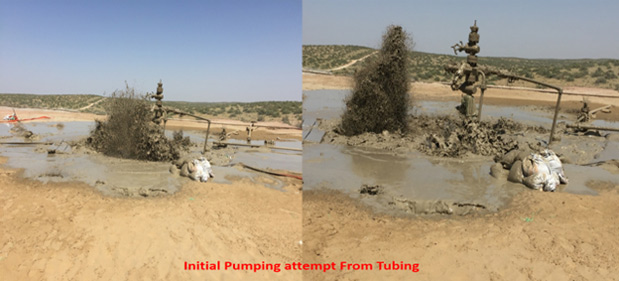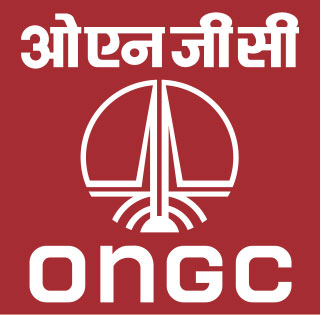ओएनजीसी संकट प्रबंधन टीम ने थार रेगिस्तान में ओआईएल ब्लैकआउट को बताया
ONGC Crisis Management Team has proved yet again that whether it is mountains of Arunachal or desert of Thar in Rajasthan, they are second to none in controlling oil-field Blowouts. ONGCReports reconstructs the success story.
Background:
Dandewala oil field is situated 50 kms from temple town of Tanot in Jaisalmer district of Rajasthan at India-Pakistan border. Dandewala oil field was discovered in the year 1989 by Oil India Ltd. Only gas is produced from this field and the total Oil India’s production from Rajasthan project is around 7 lac cubic meter per day. The gas is supplied to 270 MW gas based power plant of RSEB at Ramgarh, 60 kms from Jaisalmer.
Incident:
Well DND#9 was drilled in the year 1997 by Oil India Ltd. The well was drilled up to 1055mtrs and perforated in the interval 924.5mts- 927.5mts. Later a bridge plug was set at 923mts and zone 915.5-918.5 was perforated. The well was producing gas @ 77650 SCMD through 10mm bean and happens to be the most prolific well of that field. On 1 March 2015 during regular well checking, water bubbles were noticed due to heavy rain on the previous night. Oil India team tried to kill the well by pumping through tubing and annulus but they could not get any return and gas seepage due to surface broaching increased.
On 29 September 2015 during such well killing attempt, the surface broaching increased further resulting in a surface blowout. Oil India Ltd sought the help of ONGC management, Shri Shashi Shankar Director (T&FS) responded quickly and directed Head CMT Corporate to extend all support to Oil India Ltd for mitigating the crisis on war footing.
Head CMT Corporate Mr. D Pramanik immediately mobilized a team from ACMT, Ahmedabad in the evening of 29 SEpteber 2015. The ACMT reached site on 30 September 2015 and reviewed the situation. The control plan and requirement was given to M/s OIL from H-CMT. It was instructed to OIL India to make 02 bleeding line one from tubing and other from annulus to bleed the gas so that surface charging is reduced and there is minimum damage at the surface. This was flawlessly executed by CMT present at the site.
Looking at the severity of the incident Head CMT-Corporate Mr D. Pramanik and Mr Ajay Dixit, DGM (D) reached site on 01.10.2015 and took control of the situation.
 On reaching the site it was observed that the well was blowing gas with sand around the cellar pit area. The tubing and annulus was being released through choke via 12mm, 16mm, bean. Flowing pressure 38Ksc and 50 Ksc. This was further reduced to 10 Ksc by removing the bean.
On reaching the site it was observed that the well was blowing gas with sand around the cellar pit area. The tubing and annulus was being released through choke via 12mm, 16mm, bean. Flowing pressure 38Ksc and 50 Ksc. This was further reduced to 10 Ksc by removing the bean.
Blowout control Operation:
30 September 2015- 02 October 2015
A mitigation plan was chalked out and all inputs and requirements were given to M/S Oil India Ltd for controlling the well. To prevent well catching fire 02 fire monitors were placed to cool the gas flow and all the electrical supply and mechanical equipment were de-energized to eliminate any source of ignition.
3 October 2015 – 7 October 2015
Prepared and filled sand bags and filled the crater around cellar pit with the same.Prepared an extra line from choke manifold to bleed annulus and bled gas via tubing and annulus in full bore.
Pumped 2m3 water followed by 80m3 mud of 11 ppg through tubing and attempted to kill the well. However the well could not be killed as it was found from mud returns that the tubing, casing and the outer casing all are compromised and interconnected around 160mts from top and other depths also.
Decided to kill the well by running in Coil Tubing upto the bottom. Made arrangement to mobilize CT unit. It was not a conventional well killing job as gas was blowing from cellar pit area along with sand, it was required to keep the CTU at a distance of 45mts from the well in the upwind direction to carry out the job safely. It required procurement of more Hydraulic hoses for CTU and mobilization of 150 Ton crane to hold the injector assembly of CTU.
 Started digging of water pit to store water for fire pumps. On the request of M/S Oil India, Director (HR) Directed ONGC fire service to mobilize the team and equipment from Mehsana and Ahmedabad. Two more CMT experts were mobilized from central CMT, Ahmedabad.
Started digging of water pit to store water for fire pumps. On the request of M/S Oil India, Director (HR) Directed ONGC fire service to mobilize the team and equipment from Mehsana and Ahmedabad. Two more CMT experts were mobilized from central CMT, Ahmedabad.

